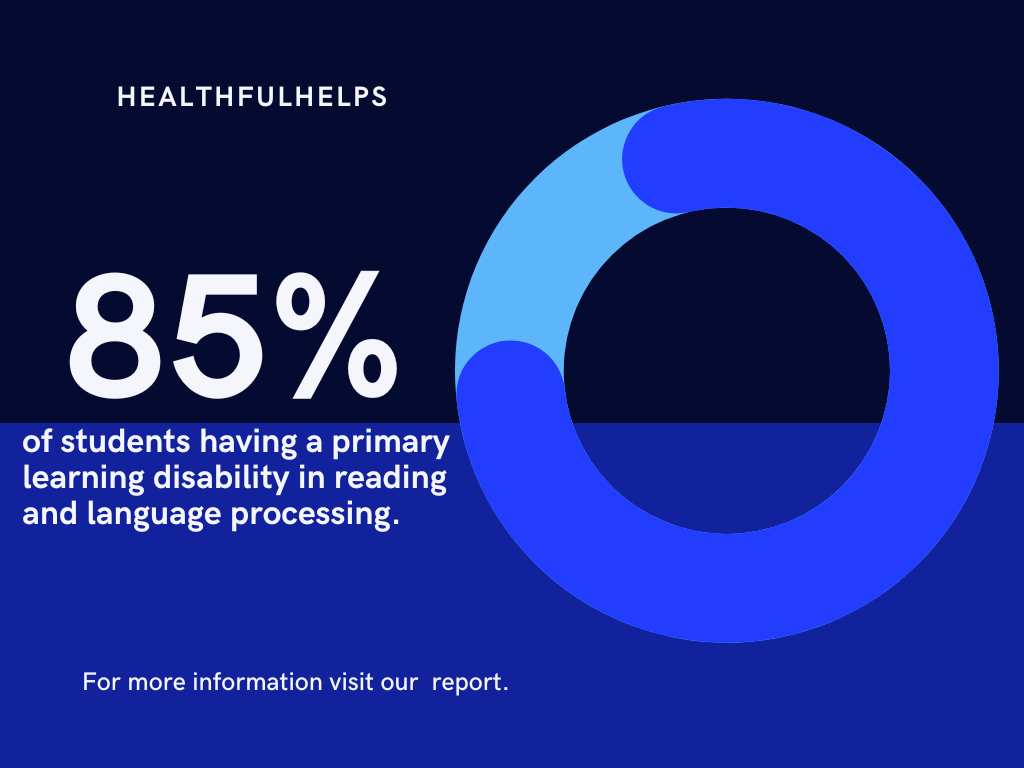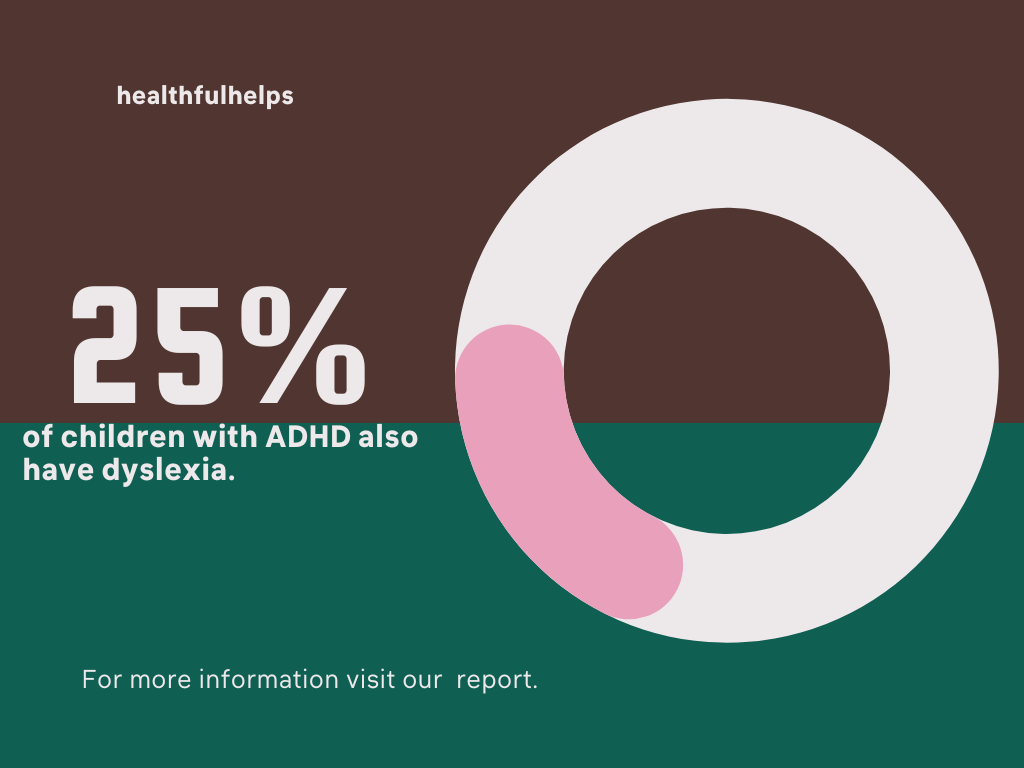How many children in America have dyslexia ?

So, let's look into dyslexia in American kids, shall we? It's like this learning challenge we’re reading gets a bit tricky.
You might be wondering, how many kids actually deal with it? Well, the ballpark figure In the general population, anywhere from 15-20% (around 30 million people in the United States) have some signs of dyslexia. That’s 1 out of every 5 children!
Also read: Frequently asked questions about Dyslexia
But hey, it's not set in stone, and the real numbers can be kinda tricky to pin down.
With that in mind, here’s a breakdown of what we’ll cover:
- Dyslexia Statistics In America - (Editor’s Choice)
- What is Dyslexia, and How Does it Affect Children?
- How Common is Dyslexia Among American Children?
- What Factors Influence Dyslexia Statistics in the U.S.?
- Why is Early Detection and Intervention Critical for Dyslexic Children?
- Challenges in Understanding and Addressing Dyslexia: What's Next?
- Final Thoughts

Dyslexia Statistics In America - (Editor’s Choice)
- One half of all students who are identified for Special Education are classified as having a learning disability (LD). About 85% of those students have a primary learning disability in reading and language processing.
- Up to 15-20% of the population as a whole may have symptoms of dyslexia, including slow or inaccurate reading, weak spelling, and poor writing.
- More than 30 million US adults have dyslexia, with only 2 million of them receiving a diagnosis.
- The high school dropout rate for kids with reading problems is 62%.
- Between 70% and 80% of people harboring limited reading proficiency suffer from dyslexia.
- In the general population, anywhere from 15-20% (around 30 million people in the United States) have some signs of dyslexia. That’s 1 out of every 5 students!
- Dyslexia is more common in boys than girls, and it tends to run in families.
- Around 7-8% of the population has a diagnosable form of dyslexia.
What is Dyslexia, and How Does it Affect Children?
Dyslexia, it's a reading difficulty, you know? Children dealing with dyslexia might read slowly and make errors, and grasping what they read or nailing spelling and writing can be a bit tricky. Just remember, it's got nothing to do with how smart they are!
A child having Dyslexia means it takes longer time for that child to do written work, or note taking due to the difficulty in processing rapid languages. Children with Dyslexia also have challenges with other aspect of learning like remembering the order of days of week, telling the time and differentiating left from right.
This can lead to the child feeling less among peers because they don’t feel like other children around them.
How Common is Dyslexia Among American Children?
Over the past couple of decades, scientists have really dug into dyslexia and found out it's pretty complicated. The trouble with reading comes from this main issue – phonological awareness, which is all about connecting spoken words to what's written.

Dyslexic children also find it hard to sound out words. Interestingly, Somewhere between 25-40% of children with dyslexia also have ADHD and conversely, approximately 25% of children with ADHD also have dyslexia. Plus, studies show that dyslexic readers process what they see and hear a bit differently.
Related: Refractive Error Statistics
How Many People Know About Dyslexia?
According to the National Institutes of Health (NIH), dyslexia affects around 5-10% of the population in the United States. This means that there are millions of individuals with dyslexia in this country alone. However, because dyslexia is often undiagnosed or misdiagnosed, it's possible that the actual prevalence is higher.
The level of awareness about dyslexia varies, but it's safe to say that many people have heard of it. However, the depth of understanding and knowledge about dyslexia can differ widely among individuals and communities. Education and advocacy efforts have increased awareness in recent years, but there's still work to be done to ensure widespread understanding and support for those with dyslexia.
What Factors Influence Dyslexia Statistics in the U.S.?
Several factors influence dyslexia statistics in the United States:
Diagnostic Criteria:
Changes in the criteria used to diagnose dyslexia can impact reported prevalence rates.
Awareness and Education:
Efforts to raise awareness about dyslexia can lead to more accurate diagnoses and reporting.
Screening Programs:
The presence or absence of school-based screening programs can affect early identification and reporting of dyslexia cases.
Access to Resources:
Disparities in access to educational resources and support can influence how dyslexia is identified and managed.
Research and Data Collection:
The extent and quality of dyslexia research and data collection can influence the accuracy of statistics.
Cultural and Linguistic Factors: Differences in language and cultural factors can impact the expression and identification of dyslexia.
Legislation and Policies:
Laws and policies related to special education and dyslexia can shape how schools address the needs of students with dyslexia.
These factors, contribute to the complexity of dyslexia statistics in the U.S. and make it important to consider various influences when interpreting and utilizing such data.
Related: How many Americans have Lewy body dementia
Why is Early Detection and Intervention Critical for Dyslexic Children?
In the world of dyslexic children, early detection and intervention play superhero roles. They're the keys to unlocking better learning, boosting confidence, and ensuring a smoother journey through school and beyond. Let's explore why they're absolutely critical.
1. Better Learning Adventures
Picture this – you're a kid, just starting school, and suddenly, reading seems like this impossible puzzle. That's what it's like for dyslexic children. Early detection means we can swoop in with tailored help, making reading way less of a scary maze and more like an exciting adventure.
2. Confidence Boost
Imagine struggling with something in front of your classmates. It's tough, right? Dyslexic kids often face this. Early intervention can turn that around, helping them feel more sure of themselves and less embarrassed about their reading hiccups.
3. Nipping Stress in the Bud
Reading woes can bring a ton of stress. Without help, this stress can snowball into other problems. Early support can help ease the pressure and keep those secondary issues at bay.
4. Smart Strategies
Dyslexic kids aren't any less smart; they just need different tools. Early detection lets teachers and parents figure out these tools and tricks, making learning less of a struggle.
5. Lifelong Impact
Remember, what happens in childhood sticks with you. Early intervention means dyslexic kids can build a solid foundation for the future, with improved reading and language skills that can open doors to exciting opportunities.
6. Money-Saver
Here's a practical one – helping early on is often cheaper in the long run. It's like fixing a leaky faucet before it floods your whole house. It reduces the need for super intensive, costly help down the line.
So, there you have it – early detection and intervention are like giving dyslexic kids a head start on a smoother, more confident, and successful journey through school and life.
Also read: 14 Must Ask Questions for dyslexia friendly schools
Challenges in Understanding and Addressing Dyslexia: What's Next?
In the quest to unravel the complexities of dyslexia, the road ahead presents both hurdles and opportunities. Explore the evolving landscape of understanding and tackling dyslexia, and what the future holds.
Certainly, let's expand on the points made in the previous response:
1. Enhanced Early Screening
With advancements in technology and research, we can anticipate more accurate and efficient methods for identifying dyslexia in young children. This may involve neuroimaging techniques, eye-tracking technology, or innovative assessments that can detect early signs of dyslexia, even before formal reading instruction begins.
2. Personalized Interventions
The future of dyslexia support will likely focus on tailoring interventions to individual needs. Artificial intelligence and machine learning may play a role in analyzing a dyslexic individual's specific challenges and adapting teaching strategies accordingly. This personalization can optimize learning outcomes.
3. Increased Awareness and Acceptance
As awareness campaigns continue, there's hope for a more inclusive society. Dyslexia may become better understood as a neurodivergent trait rather than a learning disability, leading to greater acceptance, less stigma, and improved accommodations in schools and workplaces.
4. Evolving Education
Education systems may evolve to integrate dyslexia-friendly practices from the outset. This could involve revised curricula that incorporate multisensory teaching methods and early literacy support, benefitting all students.
5. Neuroscientific Breakthroughs
Ongoing neuroscientific research may uncover specific neural mechanisms underlying dyslexia. This could lead to targeted therapies, such as neurofeedback or pharmacological interventions, designed to address the root causes of dyslexia.
6. Empowering Technology
Technology will continue to be a game-changer for dyslexic individuals. Specialized reading apps, text-to-speech tools, and augmented reality applications can provide real-time support, making reading and comprehension more accessible.
7. Advocacy and Inclusion
Dyslexia advocacy organizations will persist in pushing for policies that ensure inclusion and equal opportunities. This could involve legislation mandating dyslexia screening in schools, workplace accommodations, and awareness training for educators and employers.
Final Thoughts
In conclusion, the prevalence of dyslexia among children in America is a complex issue, with estimates ranging from 5% to 10%. While numbers vary, the importance of early detection and support remains constant in ensuring every child has the opportunity to thrive academically and beyond.
For more related content, take a look at Dyslexia Friendly Schools In Michigan



